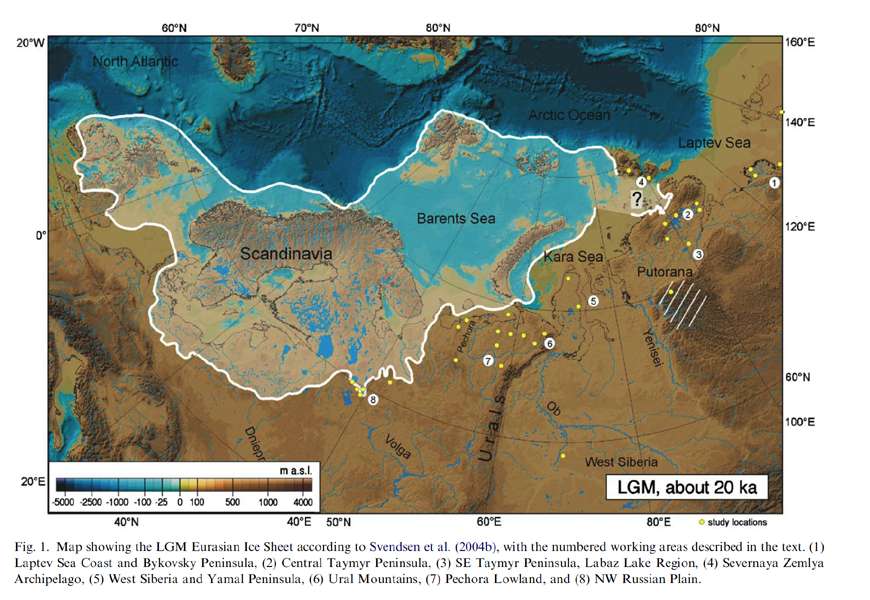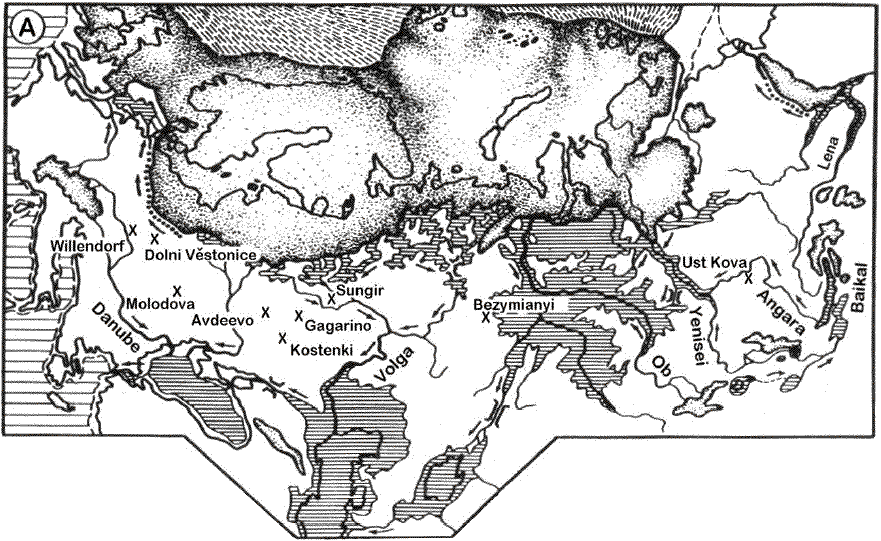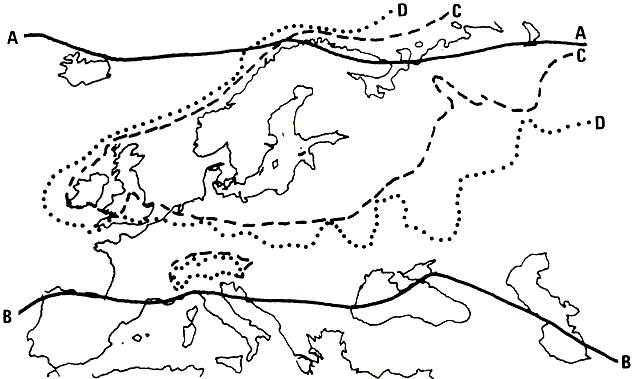 |
| Norway spruce |
New research suggests that there could have been some ice free pockets in Ice Age Scandinavia, generally believed to have been as completely covered in ice as Greenland is today, and that pine and spruce varieties may have survived in them for tens of thousands of years.
Laura Paducci et al., Glacial Survival of Boreal Trees in Northern Scandinavia. Science 2012. Pay per view.
It seems that some modern Scandinavian trees do not have direct southern ancestors but also that there are sedimentary layers with their pollen belonging to the Ice Age. This challenges the generally accepted paradigm that imagined Scandinavia fully covered in snow-ice for much of the last Ice Age.
For example, the excellent online resource Don's Maps, shows the following ice cover for the Last Glacial Maximum, c. 20,000 years ago:
 |
| Based on Svendsen 2004 |
 |
| Author: Väino Poikalainen, horizontal stripes are lakes |
It seems now that this idea was wrong after all, not just pockets of forest are known to have existed in Central Europe in the LGM but also now it is claimed that even inside Scandinavia itself some forested areas survived all the time:
Two locations in Norway have proved particularly lucrative for the researchers. One of them, Andøya Island, in north-western Norway, is the source of material dated between 17,700 and 22,000 years-old. During the last ice age, the island was an ice-free pocket, one "refuges" on the edge of the enormous ice sheet, which blanketed at that time nearly all of Scandinavia.
"The other evidence, which supports the surviving conifers in the midst of an ice age, originates in Trøndelag, central Norway. One hypothesis is that trees were able to survive on the top of nunataks, the exposed ridges or peaks of mountains protruding from glacial cover, or in more sheltered areas close to the coast where proximity to the temperate conditions of the Atlantic Ocean favoured survival.
Source: Science Daily.

Narnia
ReplyDeleteI'm unfamiliar with Narnia, other than knowing it's some sort of children story.
ReplyDeleteYeah - I don't subscribe to the idea of nunataks - they would have been well beyond the tree line range. There was news a couple of years ago that trees were growing there just after the Younger Dryas - which is more believable. During the height of the LGM, these trees likely survived in temperate niches - like islands of the coast of southern Scotland or England or Norway - if not farther inland, south and ice-free for hundreds of miles --- like the southwestern Urals.
ReplyDeleteI also suspect that coastal stripes or islands seem a more likely scenario for tree survival. In Greenland, which may be a somewhat comparable region, vegetation (although AFAIK not trees) grows in the shores only, because of the warming effect of the Ocean.
ReplyDeleteIf we are going to conjure up mythical worlds, Jötunheimr would be more appropriate than Narnia.
ReplyDeleteHey Maju,
ReplyDeleteA friend of mines referred me to you. I've taken several DNA tests and on 4 occasions the mtDNA results returned as H yet on 1 occasion the results returned as L3e. Can you explain this connection, if any, to me?
It shouldn't. Even if the tests are the most basic ones, testing only for HVS-I, there is an specific marker at site 16223 that defines macro-haplogroup R (a subset of N, a subset of L3).
DeleteThere are other subhaplogroups within L3 which may have the same mutation but none in L3e (see PhyloTree).
It's probably an error or some sort. If four tests say you're H, you most likely are H in fact.